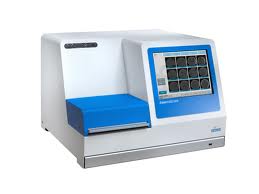Need Help? Call Now
1-800-952-8444Free Consultation
Need Help? Call Now
1-800-952-8444Posted on September 12, 2014

It is believed that as many as one in four of today’s couples have trouble conceiving. For these couples, in vitro fertilization, also known as IVF, can help significantly increase their odds of starting a family. IVF is a widely used technique that involves combining a female’s egg with a male’s sperm in a laboratory setting where fertilization can occur. The resulting embryos are then selected based on their viability and implanted inside the female with the goal of facilitating a successful pregnancy.
The success rates of IVF improve each year and are now being expanded with a technique known as preimplantation genetic diagnosis, or PGD for short. PGD involves a genetic screening process that allows people to selectively isolate embryos that do not possess certain genetic abnormalities or are of a certain sex. Although PGD is far from perfect, the technique has come a long way since it first came to fruition in the early 1990s. As of now, it is believed that more than 15,000 babies have been born as a result of the process.
Two types of parents “fit the bill” to become good candidates for PGD prior to their IVF. The first type of parent is among those plagued by frequent miscarriages or unsuccessful IVF attempts, while the second type of parent is among those considered “high risk” for passing along a genetic disease (such as Down’s syndrome or Cystic fibrosis) to their future offspring. The PGD technique requires exceptional accuracy and timeliness due to the complex development of an embryo’s cells, which are taken for a biopsy that allows scientists to rule out certain traits that can lead to genetic diseases.
A groundbreaking device known as the Embryoscope has recently changed the face of IVF, allowing for a higher success rate for both of the aforementioned types of parents using IVF (those that are looking to become pregnant after many unsuccessful attempts and those that are looking to prevent the passing on of the traits for a genetic disease to their offspring). The Embryoscope allows scientists to keep a group of embryos in perfectly conditioned incubators while keeping a watch on them with a tiny camera avoiding any kind of disturbance. Without the Embryoscope, scientists must disturb the embryos by removing them from their incubators in order to check on their development. This risks their viability.
The Embryoscope has become a large aid in helping IVF specialists choose the best embryos for implantation and it is expected that the device will eventually achieve a large-scale presence in IVF clinics all over the world. Check out our prenatal misdiagnosis malpractice page to read more about prenatal screening and genetic testing for the purposes of planning a family.
Call 1-800-952-8444